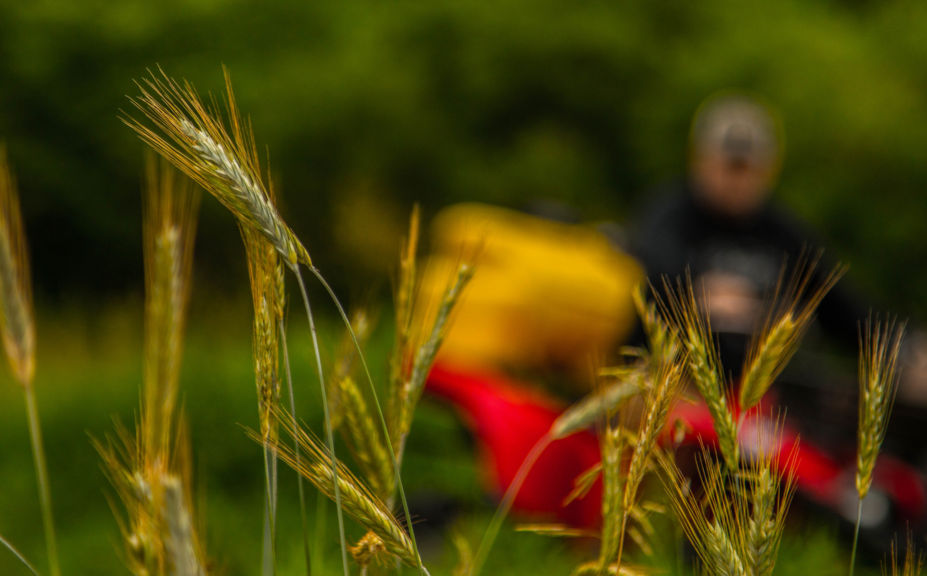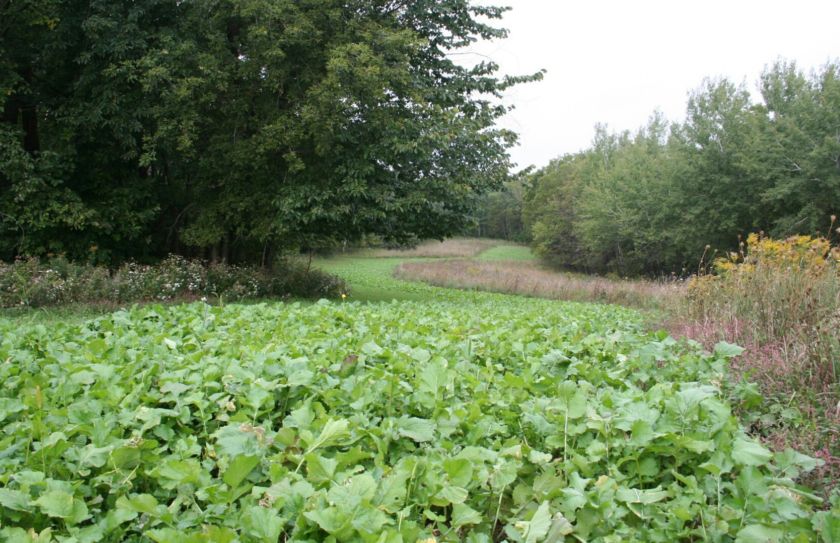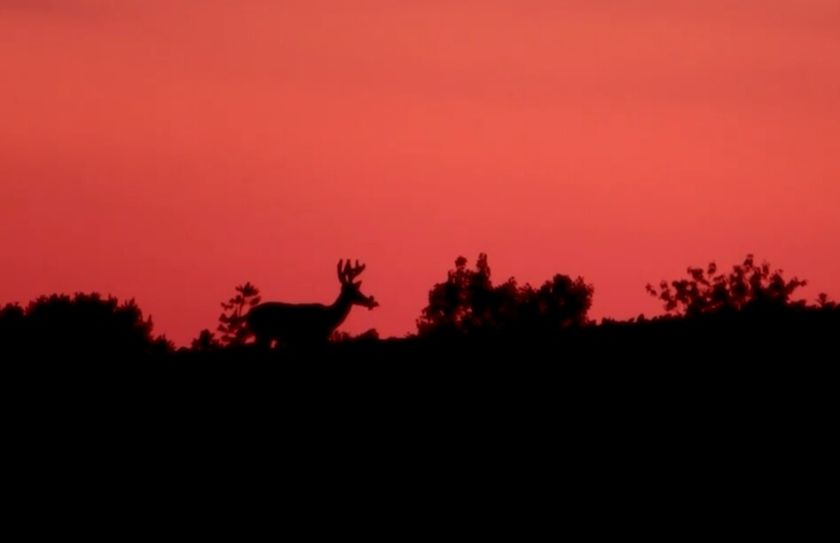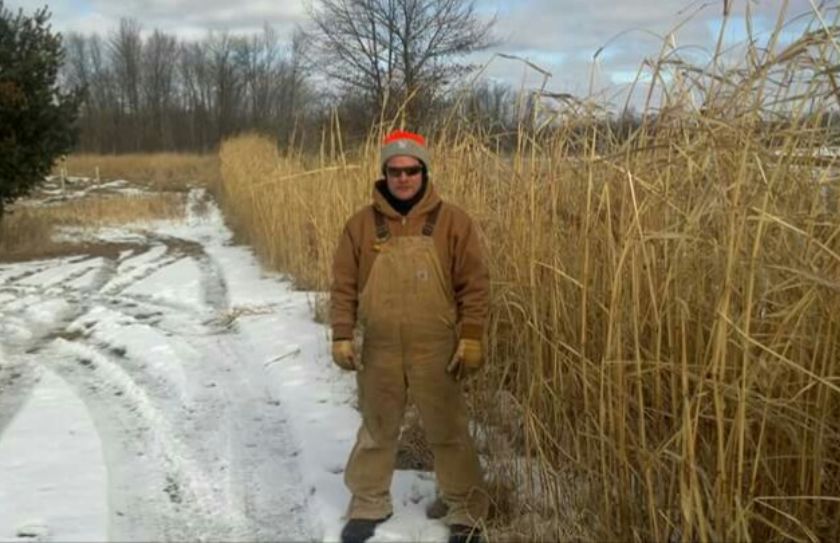These are practices I've used for several years with lots of success. In fact, the 3 sprayings and a planting have been going strong since 1999 with ZERO crop failures....
The information you are about to read is purely in the experimental phase and is intended for risk taking food plot practitioners only. Sound fun? Well, the following planting practices may not be universally accepted and widely proven, but they are some of my personal favorites for use in diminutive-resource food plot management applications.

You as a small property land manager should expect success. No disc? No tiller? No plow? No Problem! Im going to tell you how you can play with the big boys when it comes to producing those beautiful fields of green and who knows, even if you own all the tools of luxury when it comes to a little food plot fun, you may just want to give your tractor a bit of a rest after reading about these three strategies.
Can you imagine incorporating a successful spring brassica planting within an existing clover field with an underlying focus of a hunting season punch? What about having the best fields on the block during the peak of hunting season without ever touching a disc or tiller? Finally, can you imagine a cool and warm season annual rotation with only an ATV sprayer, hand-held broadcaster, and sprayer? If you care to read on and push the envelope of small parcel food plot strategies, then proceed with caution and consider how these practices that have been designed for the resource-challenged could possibly lead you to increased success.
Easy Clover Plots for Small Parcels
It takes thinking back many years to the last time I planted perennials by themselves. Why? Because although perennials have a great window of utilization, that window does not typically cover the best periods of hunting season through the early spring, especially the further north you travel. What that leads to is planting those perennial forage bases such as clover and chicory along with a cool-season cover crop during the late summer, to provide some great attraction and nutrition during the colder months. Meanwhile, the perennial base is gearing up for an explosion of growth the following mid-spring. However, Im the type of food plotter that just cant stand to see exposed soil go to waste!
After that late season combo planting with the perennial base, your food plot enters early spring with a high % of soil exposed. If your perennial plot was planted with grains such as wheat or rye, a grass specific herbicide can be used at this time to remove the young plants without harming the perennial base. On the other-hand, if your combinations included forages such as brassicas or oats and you live in northern climates, either variety will be dead by the time the spring months roll around. Also, by cutting back on your perennial forages, for example 4#s of clover instead of 8#s, even more soil exposure can be counted on to work in a crop of brassicas. Through several years of trial and error I've found that you need a minimum of 50% soil exposure but that is always possible with just a little planning.
Do not be temped to frost-seed a brassica blend! The soil may be inviting at this time of the year and the conditions favorable for short periods of time in the early spring, but numerous frosts and freezes can completely destroy the fresh growth of young brassica plantings and will significantly limit your potential success. Instead, the best time to incorporate a brassica crop within your young perennial plot is when your last frost date is within 2-3 weeks. A simple broadcasting of 5#s per acre of your favorite brassica blend will do, and when combined with an appropriate planting date for your region, at least 50% soil exposure, and the use of a cultipacker to improve germination rates, you can extend the overall window of utilization and efficiency of your food plot well into the hunting season months.
A bonus to the entire practice can be experienced by making sure that forage turnips are included in your brassica blend. The reason for the forage variety is because in many cases the brassicas can experience heavy and consistent grazing within the perennial blend through early autumn. Typically, the last thing to be eaten is the enlarged root mass of the forage turnip, turning your food plot into a crater-field of deer foraging well into the weeks of early winter. In fact, do not be surprised if that same field receives a heavy dose of attention through early spring, or until every last shred of the finger-sized buried treasures are totally consumed.
What are the best aspects concerning your spring cultipacking activity? No disking or tilling is needed, and the results can be fairly effortless to achieve. It just takes a little planning, a good eye for adequate soil exposure, and an appropriate planting date. Yes, there is some risk involved. Too much of a perennial base can completely consume the young brassica plants by robbing them of a desperately needed exposure of full-sun, but at the same time if you plant too early excessive frosts and freezes can destroy the crop as well. However, when you achieve that appropriate balance of planting date and soil exposure your experiment can end up being much less of an experiment than you think, and those two factors need to be counted on with the next practice of warning label food plot strategies.
3 Sprayings and a Late Season Food Plot Planting
My lease partners and I have 6 acres of plantings on my SW WI lease and those 6 acres play a critical role in both the hunting and QDM potential of the parcel. However, we have no access to a tractor. 6 acres of plots may seem like a lot of plot acreage to work with, but its actually extremely easy to prepare and plant the entire acres with just a few timely hours of work every few weeks. Our efforts that begin in the spring reward us with an every increasing deer herd as the hunting season progresses into early January. The 6 acres of plots provide a huge amount of nutrition at a time of little in the whitetail woods, but at the same time allow us to build a high quality QDM herd that includes a population of protected bucks that we can graduate into the next season.
Our efforts begin in early spring, when the native grasses and broadleafs are in their first aggressive growing phase. It is at this time that we rely on a 2 quart per acre spraying of 41% Glysophate solution to begin our annual plots. This first spraying of the year is the most important because it limits the future weed debris that can hinder seed to soil contact in the coming months. The 2nd and 3rd sprayings are completed between 5 and 6 weeks apart with 1 quart per acre of chemical so that by the time the 3rd spraying takes place the plot has a sufficient amount of soil exposed for planting activities to begin. We time our sprayings to end by the later of July so the plots are ready for a broadcasting of brassicas. This is too early for wheat or rye, so we return a last time to broadcast the grains around Labor Day, which is timed perfectly for the 3rd weekend of WI's bow opener.
The brassica blends we use are simply broadcasted onto the exposed soil, through the light covering of dead and decaying weed debris. We return around Labor Day to plant the grains. An ATV, a 25-gallon sprayer, and a broadcaster are all the tools you really need to use, and the keys for your plantings are an elimination of potential weed debris, and adequate soil exposure. If an ATV sounds like a luxury to you, the same can be accomplished with a 4-gallon back sprayer but Id lace up your running shoes! You may even have an area you want to develop that contains early successional growth such as aspen or red willow. If young saplings exist, simply drive your ATV with sprayer over the top of the young growth and let the Glysophate do its job. By the late summer the trees will nothing more than dried out and decaying branches and you can use the same methods to distribute and plant your seeds. I've had great luck establishing brassicas blends, clover, chicory, buckwheat, wheat, and rye and when you include a perennial base within your late summer no-till plantings, you create the option of cultipacking the brassica blend into your young perennial plot the following spring.
This may sound unconventional, but it works and there is no reason for you not to have some high quality plots at a time when the deer have little in the whitetail woods and your hunting season enjoyment can be influenced the most. Once you have the concept of the 3 sprayings and a planting method, you may want to take the next step in turning your limited resource no-till operation into a year-round rotation of annual forages that specifically target a years worth of nutrition and attraction.
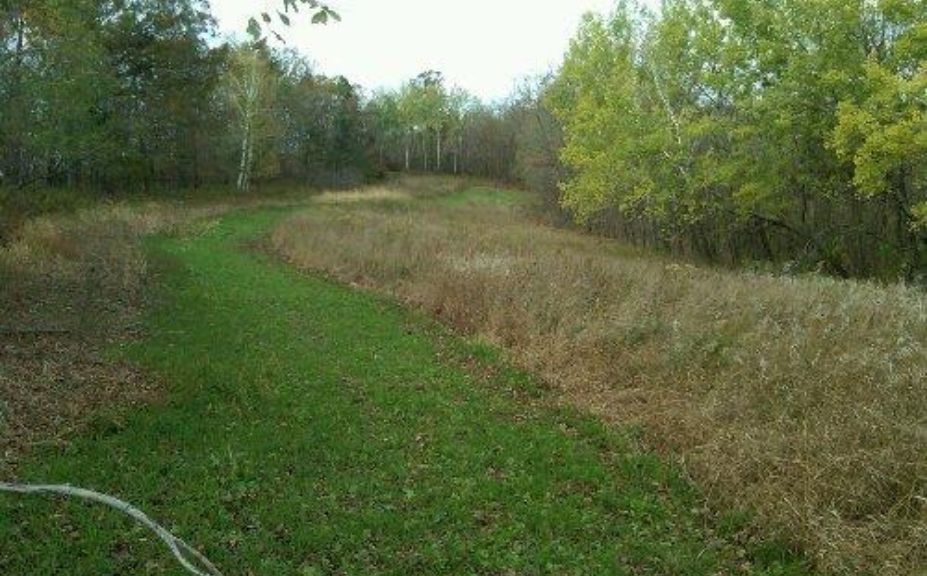
No-Till Annual Food Plot Rotations
Your late summer no-till planting was a huge success! The 1 acre brassica blend provide over a ton of power-packed nutrition heading into the early winter months, and the accompanying 1 acre of wheat led to an encounter with a giant 4 year old buck in late Sept. Also, the wheat provided an important source of nutrition in the early spring weeks before the neighbors alfalfa had awaken from winters grasp. Now what? The brassicas were gone by mid-winter and you can spray the wheat out of the field to prepare for your next late summer planting, but how about another planting option?
Buckwheat is a great soil builder. Buckwheat is also very attractive when young but depending on the quality of the soil and growing conditions, buckwheat can also be transformed into a 3-4 jungle by late summer. Convention wisdom would suggest that without heavy tilling equipment this tangled jungle could be quite prohibitive to a no-till planting method. Even with a high percentage kill on the buckwheat, there just is not enough time to expose enough soil for planting. However, we aren't discussing conventional wisdom in this article, but instead you can look at that standing mess as a great opportunity.
The key to a forage like buckwheat lies in the stalk that develops to support the massive leaf structure. When standing along side and looking into a field of buckwheat, take a look at how much soil is showing through the stiff, tall stalks of the planting. Again, when you have that much soil exposed, think of it as a golden opportunity. Do not worry about tilling in the buckwheat, but instead, broadcast your seed right into the stand. This works with a brassica blend, clover, annual grains, chicory, and I've even established a lawn in my backyard with this practice simply, it works! But, of course without sunlight your young plants will not grow so that leads to the next step in the process.
When you standing buckwheat has been seeded and fertilized in the late summer its time to cultipack. I personally love my double 5 cultipacker that I can pull behind an ATV, but even the ATV tires themselves can become an effective tool for crushing the stalks of your summer annual. If you have the use of a cultipacker at your disposal I've found that crushing the field twice works very well. When you are done destroying your crop of buckwheat your seed will be covered with plenty of organic matter that will die and decay while aiding in germination. To insure a good kill of the buckwheat I like to follow up the crushing of the field with a 1 quart per acre of Glysophate. This will insure that the majority of the buckwheat will stay in a horizontal position, while at the same time limiting any future weed growth that may have become established within the field.
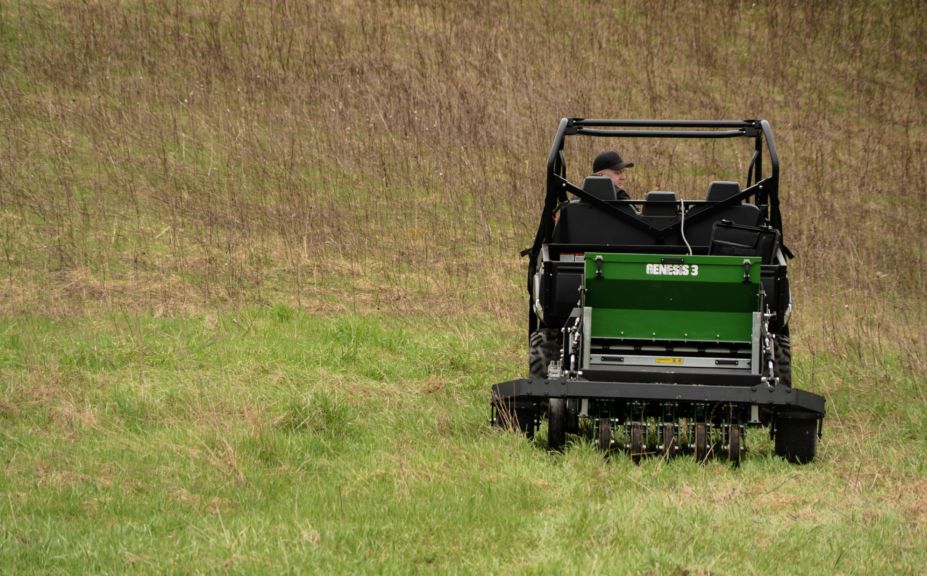
*Do you crave no till food plots and owning nothing but the best equipment? Then make sure to check out the Genesis 3 Planterthat I am blessed to use today!
Again, the stalks of the buckwheat are an important aspect within the concept of the annual no-till rotation, but that does not mean that buckwheat is your only summer option. I have also included varying amounts of forage soybeans, peas, and brassicas to the mix. Each of those forages will really pump up the nutrition and attraction for the summer months, but at the same time they will substantially increase the variety of forages offered on the property. At the end of the summer though, when frost and freezes are quickly approaching and the summer annuals are nearing the end of their usefulness, the late summer no-till rotation will continue so that the cool season months can be filled with annual forages that specifically target the leaner periods of the ever-changing whitetail woods. Best of all, this high-powered annual rotation can be completed with very little equipment concerns or personal resources.
Conclusion
Although these methods may push the envelope of accepted commonly accepted food plot practices Ive found they are highly applicable to the little guys of the food plotting world. In fact, every year if find myself tilling less, and less. I used to enjoy my tractor and all the trimmings but I havent missed it one bit and I enjoy both the efficiency AS WELL AS the results. Im all no-till now and the results are outstanding!
